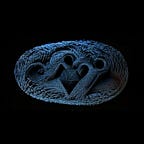Introduction to Python 3
A Beginner’s Guide
This post was generated by an AI
Python is a programming language that is widely used in many different industries today. Python 3 is the latest version of Python, and it is considered to be a major update from the previous versions. This guide will introduce you to the basics of Python 3, so that you can get started with using it for your own projects.
The Basics of Python 3
Python 3 is a programming language that is widely used in many different industries today. Python 3 is the latest version of Python, and it is considered to be a major update from the previous versions. This guide will introduce you to the basics of Python 3, so that you can get started with using it for your own projects.
Data Types
In Python 3, there are several different data types that you can use. These data types include integers, floats, strings, and Booleans.
Integers are whole numbers that can be positive or negative. For example, -5, 0, and 100 are all integers.
Floats are decimal numbers. They can also be positive or negative. For example, -5.0
Operators
Operators are symbols that tell Python to perform certain operations on values. For example, the + operator tells Python to add two values together.
Python has several different types of operators, including arithmetic operators, assignment operators, comparison operators
Control Flow Statements
Control flow statements are used to control the order in which your code is executed. For example, you can use a for loop to iterate through a list of values.
In Python 3, there are several different types of control flow statements that you can use. These include if/elif/else, while loops, and for loops
Functions
A function is a block of code that takes one or more inputs and returns an output. Functions are a fundamental part of programming, and they can be used to perform many different tasks.
In Python 3, there are several built-in functions that you can use. These include print(), input(), len(), range(), and type().
You can also create your own custom functions. To do this, you will need to use the def keyword
Classes and Objects
Classes and objects are two fundamental concepts in object-oriented programming (OOP).
A class is a template for creating objects. A class defines the attributes and methods that an object will have.
An object is an instance of a class. When you create an object, you are creating a new instance of a class. This new instance will have all the attributes and methods defined by the class.”
Python 3 is a great language for beginners to learn. It is easy to read and write, and there are many different libraries that you can use to extend its functionality. If you are new to programming, then Python 3 is a great place to start.
